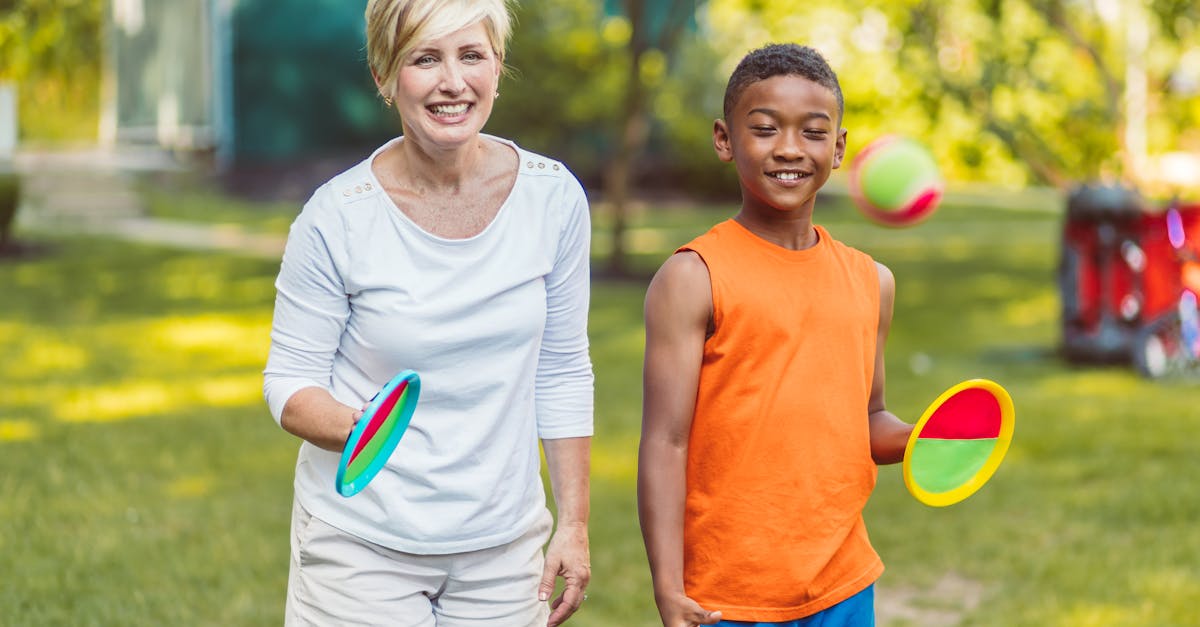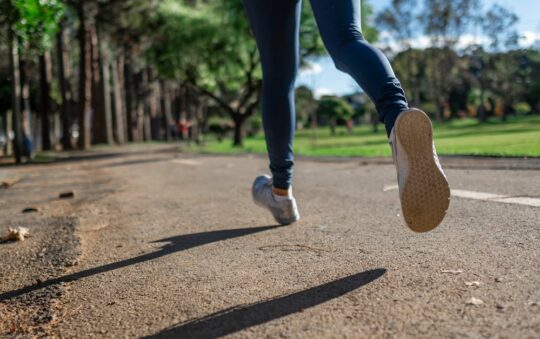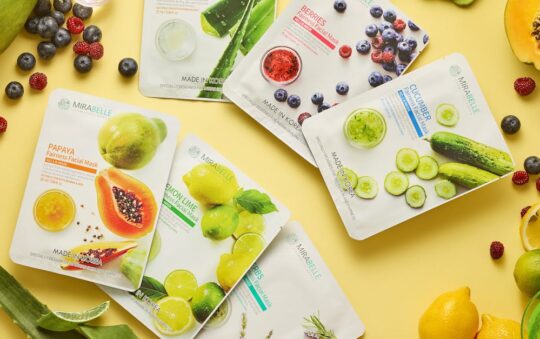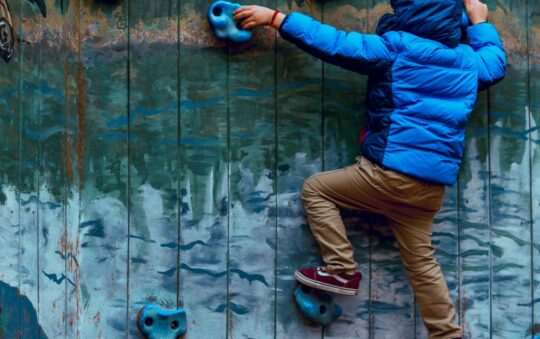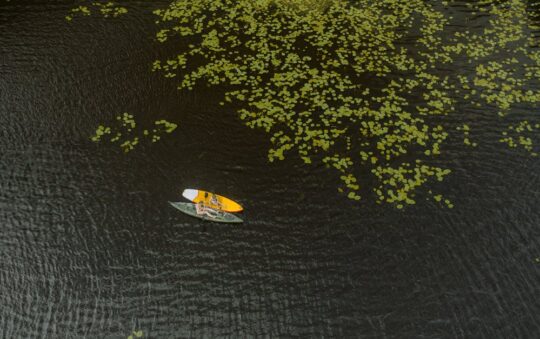Have you ever watched your kids’ eyes light up as they paddle across a calm lake, only to realize the bulky gear makes packing a hassle? I’ve been there—juggling bulky equipment while trying to keep the adventure fun and stress-free. That’s why collapsible paddles for kids caught my attention—they blend convenience with excitement in a way that makes every outdoor trip feel lighter and more enjoyable.
In this text, I’ll share why these innovative paddles could change the way your family explores the water, offering a fresh twist on classic fun without sacrificing performance or safety. Let’s jump into what makes collapsible paddles a game-changer for young adventurers and their parents.
Features of Collapsible Paddles for Kids
Collapsible paddles for kids bring a perfect mix of convenience and fun to family water adventures. These paddles are crafted to be easy to pack and light enough for little hands while still offering solid performance on the water.
Design and Build Quality
When it comes to design, collapsible paddles stand out for their user-friendly folding mechanisms. Usually, they break down into two or three parts that snap or twist securely into place. This means you can stash them in a backpack or car trunk without fuss, which I found a lifesaver during last summer’s camping trip.
The build quality often balances sturdiness with lightweight materials. Brands tend to prioritize smooth joints that lock firmly but still fold without extra effort. Kids don’t want to wrestle with their gear, so paddles that fold easily but don’t feel flimsy hit just the right note.
Materials Used
Most collapsible paddles use a mix of aluminum, plastic, and sometimes fiberglass. Aluminum shafts provide strength while keeping the paddle light—no one wants their kid struggling with heavy equipment on a sunny afternoon. The blades often feature durable plastic that can take a few bumps against rocks or logs.
Fiberglass blades pop up in higher-end models, offering better flexibility and performance but at a slightly higher price. I’ve noticed paddles with reinforced plastic blades hold up well especially in family settings where rough handling is a given.
Size and Weight
Size and weight are crucial for kids’ paddles. Ideally, you want a paddle that’s proportionate to your child’s height and arm length. Collapsible paddles typically range from 40 to 50 inches when assembled, which works well for ages 5 to 12.
Weight-wise, most fall between 1.5 and 2.5 pounds. That might not sound light, but for a paddle that folds down into a manageable size, it’s a solid balance. Here’s a quick size and weight comparison I pulled together:
| Brand Model | Length (Assembled) | Weight | Number of Sections |
|---|---|---|---|
| PaddleFun Junior | 42 inches | 1.8 pounds | 2 |
| AquaLite Compact | 48 inches | 2.3 pounds | 3 |
| Streamline Mini | 40 inches | 1.5 pounds | 2 |
Safety Features
Safety always comes first with kids’ gear, and paddles are no exception. Many collapsible models include rounded blade edges to prevent accidental cuts or scrapes. Some feature reflective strips or brightly colored handles, making the paddle easier to spot if it slips into the water.
Locking mechanisms play a safety role too. Without a reliable lock, the paddle could collapse mid-stroke, which is not fun or safe. My go-to advice is to pick paddles with clear, sturdy locks and test them before letting the kids loose on the water.
Quick tips for maximizing safety with kids’ paddles:
- Always check that joints are firmly locked before paddling.
- Pick bright or neon colors for visibility.
- Choose paddles with blades rounded or coated for softer edges.
With these features in mind, collapsible paddles can turn tricky packing into smooth sailing and keep your kids paddling safely and happily.
Performance and User Experience
When it comes to collapsible paddles for kids, how they perform on the water and feel in little hands really matters. These paddles aim to strike the right balance between ease for young paddlers and practicality for parents managing all the gear. Let’s break down what I’ve found in actual day-to-day use.
Ease of Use for Kids
Kids are notoriously impatient when it comes to equipment that looks complicated or feels heavy. That’s why collapsible paddles need to be simple to handle and quick to assemble. Most models snap together in just a few seconds with clear locking mechanisms—even my 7-year-old can do it solo. This means less time fumbling on shore and more time paddling.
The weight is another big factor. Collapsible paddles usually weigh between 1.5 to 2.5 pounds, light enough to avoid tiring little arms quickly. The grip shapes are often rounded and sized for small hands, making it easier to steer and control without slipping—some even have rubberized handles for extra hold when your kid’s hands get wet.
A quick tip? Before heading out, have your kids practice clipping and unclipping the paddle at home. It builds confidence and speeds up setup on the water (and trust me, less impatience is a blessing!).
Portability and Storage
Here’s where these paddles shine the most. I’ve carried collapsible paddles in my backpack, tucked inside a kayak hatch, or slipped them between picnic gear with zero fuss. Collapsing them down to about 15-20 inches makes packing much less of a headache compared to rigid paddles that demand special handles or bulky straps.
This portability is not just a space-saver but a real time-saver too. When you’ve got kids and a boat or boards to manage, every saved inch means fewer headaches. Plus, lightweight parts don’t add sore muscles after lugging everything to and from the water spot.
Packing Tips for Portability:
- Always double-check that paddle sections are securely locked before packing.
- Store paddles in a padded sleeve or cloth bag to protect the locking joints.
- Label paddle parts if you have multiple kids to avoid mix-ups.
Durability in Various Conditions
Durability can sound like a big word, but it boils down to how a paddle holds up against bumps, splashes, and the occasional accidental drop (trust me on this). Collapsible paddles made with aluminum shafts and reinforced plastic blades usually stand strong through a season’s worth of use.
Some models throw in fiberglass blades which give a bit more flex and better resistance to cracking. Reflective strips or bright colors add an extra layer of safety and make your child more visible on cloudy days or in low-light conditions.
That said, no paddle is invincible. Saltwater, sand, and rough handling can knock down lifespan. Rinse your paddle off with fresh water after every trip, and routinely check locking pins for corrosion. A little maintenance goes a long way—like a friendly reminder to treat your gear right (which, trust me, is easier than it sounds).
Using these paddles has genuinely turned chaotic pack-ups into smooth launches, and kid smiles tell me the paddling part is just as fun. If you can get your little ones involved in the setup (and maybe sneaking in a few water breaks) you’re off to a winning start.
Pros of Collapsible Paddles for Kids
One of the biggest perks I noticed with collapsible paddles is how easy they are to carry. Kids’ gear already takes up so much space, and these paddles fold down neatly, fitting right into a backpack or kayak compartment. That means less hauling and more time for fun on the water.
The lightweight design is a real win, too. Since these paddles usually weigh between 1.5 and 2.5 pounds, kids can handle them comfortably without getting tired too fast. My nephew, who’s just 7, found it much easier to keep going when he wasn’t lugging a heavy, awkward stick.
Safety gets a thumbs-up as well. Rounded blade edges and secure locking systems mean fewer worries about accidental cuts or the paddle falling apart mid-stroke. Plus, some models include reflective strips that boost visibility when the sun starts to dip—which is a nice touch I didn’t expect but definitely appreciate.
Another pro is the quick assembly time. I’ve seen kids fumble with gear a lot, but most collapsible paddles snap together in seconds without tools. This keeps the excitement alive—less waiting around, more paddling.
Durability is another strong suit. While these paddles don’t feel bulky, they’re tough enough to survive bumps on rocks or the occasional drop. Materials like aluminum and fiberglass give them good strength without weighing down little arms.
Here’s a quick rundown of benefits I’ve seen in collapsible paddles for kids:
- Compact and space-saving — perfect for packing light.
- Lightweight — easy for kids to use for longer periods.
- Safe design features — rounded edges and reliable locks.
- Fast and simple assembly — less hassle, more playtime.
- Durable materials — stand up to rough handling and splashes.
- Visibility enhancements — reflective strips for low light safety.
If you’re looking for a paddle that fits into family outings naturally without causing extra stress or fatigue for your kids, collapsible models are solid contenders. It’s like giving them gear that keeps up, not slows down, their water adventures.
Cons of Collapsible Paddles for Kids
While collapsible paddles bring plenty of perks for family water fun, they’re not without their quirks. From my experience and talking with other parents, here are some things to keep in mind before buying one.
Potential Weak Points at the Joints
Since these paddles fold down into two or three pieces, the connection points can be a bit more fragile than a one-piece paddle. If your little one’s a bit rough or drops it often, those locks and hinges might wear out faster. I’ve seen paddles where the locking mechanism loosened after a few outings, which meant extra checking and tightening before hitting the water.
Assembly Can Be Tricky for Younger Kids
Most collapsible paddles boast quick setup times, but for younger kids under 7, putting the paddle together properly can be a bit frustrating. Sometimes the pieces don’t snap or align easily—think of it like a mini puzzle while everyone’s ready to launch. I recommend practicing assembly at home before the trip. Teaching your kid how to click everything into place saves headaches when you’re eager to start paddling.
Slightly Heavier Than Fixed Paddles
Though designed to be lightweight, some collapsible models add a bit more weight because of the extra hardware. My youngest noticed the difference holding one for a while compared to a simple solid paddle. If your kid has smaller hands or less arm strength, it might feel a tad cumbersome over long paddling sessions.
Cost Can Be Higher
Expect to pay a bit more for a quality collapsible paddle. The convenience comes with a price tag usually higher than basic fixed paddles. If your family paddles only occasionally, a less expensive regular paddle might make more sense. That said, if space-saving is a big deal for your adventures, the investment often pays off.
More Parts Mean More to Lose
When a paddle breaks down, there are inevitably small parts like pins or rubber washers involved. Losing one of these can render the paddle useless until you find replacements. On one trip, I misplaced a small locking pin and suddenly had a paddle that couldn’t lock fully. Keeping parts together can mean an extra bit of care or a dedicated pouch in your gear bag.
Quick Tips to Handle These Cons
- Show kids how to carefully assemble and disassemble their paddle before hitting the water.
- Check locking mechanisms regularly to catch any loosening early.
- Consider paddles with simple, sturdy locks over ones with fiddly clips if durability is key.
- Pack a small repair kit for pins and screws if possible—better safe than paddling one-handed!
- Compare weights before buying and test hold to ensure your child can comfortably manage the paddle.
In my opinion, these downsides are manageable, especially with a little prep and care. Still, it’s good to know what you’re signing up for, so you can make the best choice for your kiddo’s water fun.
Comparison with Regular Paddles
If you’ve ever wrestled with bulky gear on a family water outing you know how heavy and awkward regular paddles can be. Collapsible paddles for kids offer a fresh take by making things simpler while keeping fun and safety in check.
Advantages Over Non-Collapsible Paddles
Collapsible paddles shine when it comes to saving space. Unlike traditional paddles that often feel like you’re lugging a small tree branch, these break down into smaller pieces that fit neatly into a backpack or kayak hatch. This means no more wrestling with oversized gear bags or leaving paddles behind because they won’t fit.
They’re also surprisingly light. My kids found switching to collapsible paddles made paddling less tiring which kept their energy up longer. The mix of materials—usually lightweight aluminum with plastic or fiberglass blades—strikes a nice balance between sturdy and manageable.
One detail I appreciate is the safety factor. Rounded edges and reflective strips on many collapsible models add extra peace of mind. Plus, the locking mechanisms that keep assembled paddles secure work well when checked regularly. These features aren’t always standard on regular paddles designed with adults in mind.
And here’s a bonus—quick assembly makes a big difference for restless kids. While traditional paddles are good to go out of the box, collapsible versions being easy to put together means less waiting, more paddling.
Potential Drawbacks Compared to Traditional Paddles
That said, collapsible paddles do come with a few trade-offs. The joints where pieces connect can be weak points, especially with younger users who might be a bit rough taking them apart or putting them back together. I’ve seen a couple of paddles develop slight wobble after heavy use (which, trust me, is easier to spot when kids start complaining).
Assembly can sometimes stump younger kids at first, which means adult help is often needed. While the added parts make storage easier, it also means smaller components can get lost if not kept track of carefully—losing a locking pin or a blade segment could leave you paddle-less at a critical moment.
Also, the price can be higher than simple, one-piece paddles. But if you consider how much time and hassle you save on transport and storage, the cost evens out nicely.
In terms of weight, some collapsible paddles might be slightly heavier than the lightest fixed models. Still, the difference is usually minor unless your kid is very small or sensitive to extra weight.
Quick Tips for Deciding Between the Two
- Consider how you transport gear: If tight storage on a car rack or backpack is a must, collapsible paddles are a win.
- Think about your child’s age and patience: Younger kids might need help assembling, so check locking mechanisms often.
- Budget wisely: Higher upfront cost might save money in the long run by preventing gear damage or loss.
- Check for safety features: Rounded edges and reflective stickers matter for little hands and visibility.
For me, collapsible paddles blend convenience with practical safety and performance. If your family enjoys quick getaways on the water and hates hauling bulky gear (like mine), they’re definitely worth a look.
Testing and Hands-On Experience
Getting my hands on collapsible paddles for kids was a fun way to see if they really live up to the promises of convenience and performance. Here’s what I found from putting them through their paces on and off the water.
Field Testing Overview
First up—I took these paddles out to a local lake where we often kayak with my niece and nephew. Setting up the paddles was straightforward but had its moments. Most models snapped or twisted together quickly. Still, younger kids sometimes needed a little help locking the pieces securely, especially on the very first try (which, trust me, is easier than it sounds once you get the hang of it).
What really stood out was how easy it was to stick the paddles into a backpack or toss them into the boat without feeling like I was lugging around a bulky accessory. When you’re already juggling life jackets, snacks, and curious little adventurers, every inch of saved space counts.
During the test I paid close attention to the locking mechanisms. Some felt more solid than others—an important factor since loose parts mid-paddle can be a real headache (or even a safety hazard). A few models included bright reflective strips which might sound like a small perk but proved handy once the sun started dipping below the trees.
Performance in Different Water Settings
I’m a big believer in seeing how gear performs beyond just a calm lake, so I took the paddles to a gentle river and a small bay with mild waves. Here’s what I saw:
- Calm water: Paddling was smooth and light, which made longer sessions easier for the kids. The paddles felt responsive without any wobble. I noticed the lightweight materials really helped prevent fatigue.
- Shallow river with some current: The paddles handled steady strokes well. I did notice that the joints had a tiny bit more flex compared to fixed paddles, but nothing that made me lose confidence. It was like the paddles said, “Yep, we can take this.”
- Choppy bay water: This is where things got interesting. Some paddles performed admirably holding up strong against waves, while a couple felt a bit less stable. The blades with rounded edges and a slightly larger surface area provided better control in these conditions.
It was clear that while collapsible paddles might not replace high-end fixed paddles for serious paddlers, they’re more than capable for kids getting their feet wet in various lakes, slow rivers, and gentle bays.
Here’s a quick recap of what really mattered in my testing:
| Water Setting | Paddling Ease | Stability | Durability Notes |
|---|---|---|---|
| Calm lake | Very smooth/light | Excellent | No issues after repeated use |
| Gentle river | Good stroke response | Slight joint flex | Held up well with usual bumps |
| Small bay waves | Varied by model | Moderate to good | Some joints flexed more |
If you’re thinking about grabbing a collapsible paddle for your kid, keep in mind how and where you’ll be paddling most. Also, spending a few minutes helping them with assembly at home (which feels like a mini puzzle!) can turn setup into a quick routine instead of a challenge.
Test these paddles out with your kids and you might just save yourself some back pain and prep time—not to mention add an easy “win” to your family adventure list.
Alternatives to Collapsible Paddles for Kids
If collapsible paddles aren’t quite the right fit for your family’s water adventures, don’t worry. There are plenty of other paddle options out there that can work just as well for kids. Let’s explore some solid alternatives and brands you might want to check out.
Other Paddle Types Suitable for Children
Sometimes simpler is better, especially when dealing with young paddlers. Here are a few paddle types that I find particularly kid-friendly:
- Fixed-Length Paddles
These are your classic one-piece paddles that don’t fold or collapse. They tend to be sturdier with no weak points at joints, making them a great choice for rough play or younger kids still mastering coordination. On top of that, they usually come at a friendlier price point. Just double-check the length to make sure it suits your child’s height. For kids, paddles between 40 to 50 inches are usually ideal.
- Adjustable-Length Paddles
If you want something a bit more flexible but without the hassle of parts, paddles with adjustable shafts can be a smart pick. These allow you to lengthen or shorten the paddle to keep up with your kid’s growth spurt. The lock mechanisms are often simple enough for older kids to handle on their own. Just watch for any wobbling around the adjustments — that can get tiring during longer trips.
- Junior-Sized SUP Paddles
Stand-up paddleboarding (SUP) has grown in popularity, and many brands offer kid-sized SUP paddles. These are usually lightweight and crafted with ergonomic grips perfect for little hands. If your water adventures lean more toward lakes or calm rivers, these can double as kayak or canoe paddles without being bulky.
Here’s a quick tip from my own experience: When testing paddles with kids, see how they grab the handle and how easy it is to control the blade in the water. Comfort sometimes beats fancy features.
Brands and Models to Consider
Based on what I’ve seen and tested, here are a few brands that offer quality alternatives for kids’ paddles, covering fixed, adjustable, and SUP styles:
| Brand | Paddle Type | Notable Features | Price Range |
|---|---|---|---|
| Bending Branches | Fixed-Length, Adjustable | Durable fiberglass blades, ergonomic grips, kid sizes available | $60 – $120 |
| Werner | Adjustable-Length | Lightweight aluminum shafts, secure locking mechanism | $80 – $130 |
| Aqua-Bound | SUP and Canoe Paddles | Extra grip comfort, corrosion-resistant parts | $70 – $110 |
| SeaSense | Fixed-Length | Budget-friendly, strong plastic blades, ideal for beginners | $25 – $50 |
Keep in mind that prices vary by retailer and might rise slightly for special materials like carbon fiber, which usually isn’t necessary for kids just starting out.
One thing I appreciate about brands like Bending Branches is how they balance quality and kid-specific designs. My niece loved how easy it was to control her paddle, making her more confident on the water (and less likely to lose interest).
Still, whichever paddle you pick, test it together so your little one feels part of the choice. That simple step can turn a new paddle into a favorite accessory for many family trips ahead.
Conclusion
Choosing the right paddle for kids can make all the difference in creating memorable water adventures. Collapsible paddles offer a smart balance of convenience, safety, and performance that suits active families on the go.
While they come with a few trade-offs, their portability and ease of use often outweigh the downsides, especially when space and packing are concerns. With a bit of practice and care, these paddles can open up new opportunities for fun and exploration on the water.
Eventually, finding gear that fits your child’s needs and your family’s lifestyle will keep everyone excited and ready for the next splash.
Frequently Asked Questions
What are collapsible paddles for kids?
Collapsible paddles are paddles designed to break down into two or three parts for easy storage and transport. They are lightweight and sized for children, making outdoor water activities more manageable and fun.
How do collapsible paddles improve family water adventures?
They save space, are easy to carry, quick to assemble, and designed with safety features. This allows families to spend more time on the water and less time dealing with bulky gear.
What materials are collapsible paddles made of?
Typically, they are made from a combination of aluminum, plastic, and sometimes fiberglass. This mix offers strength while keeping the paddle lightweight for kids to handle easily.
What sizes and weights are ideal for kids’ paddles?
Kid-friendly paddles usually range from 40 to 50 inches in length and weigh between 1.5 and 2.5 pounds, making them suitable for children aged 5 to 12.
Are collapsible paddles safe for children?
Yes, they often include safety features such as rounded blade edges, reflective strips, and secure locking mechanisms to reduce accidents while paddling.
What are the main advantages of collapsible paddles?
They offer portability, easy assembly, safety, and durability, enabling kids to use them comfortably and parents to pack gear efficiently.
What are the drawbacks of collapsible paddles?
Potential weak joints can wear out faster, assembly may be tricky for younger children, the price can be higher, and small parts pose a risk of getting lost.
How do collapsible paddles compare to traditional fixed paddles?
Collapsible paddles are more portable and space-saving but may be less durable at the joints and cost more. Fixed paddles tend to be sturdier and simpler without assembly.
How can I maintain collapsible paddles?
Rinse them with fresh water after use, check for corrosion or wear regularly, and ensure locking mechanisms function properly to extend their lifespan.
Are there alternatives to collapsible paddles for kids?
Yes, options include fixed-length paddles, adjustable paddles that grow with the child, and junior-sized stand-up paddleboard (SUP) paddles designed for ergonomic comfort.
